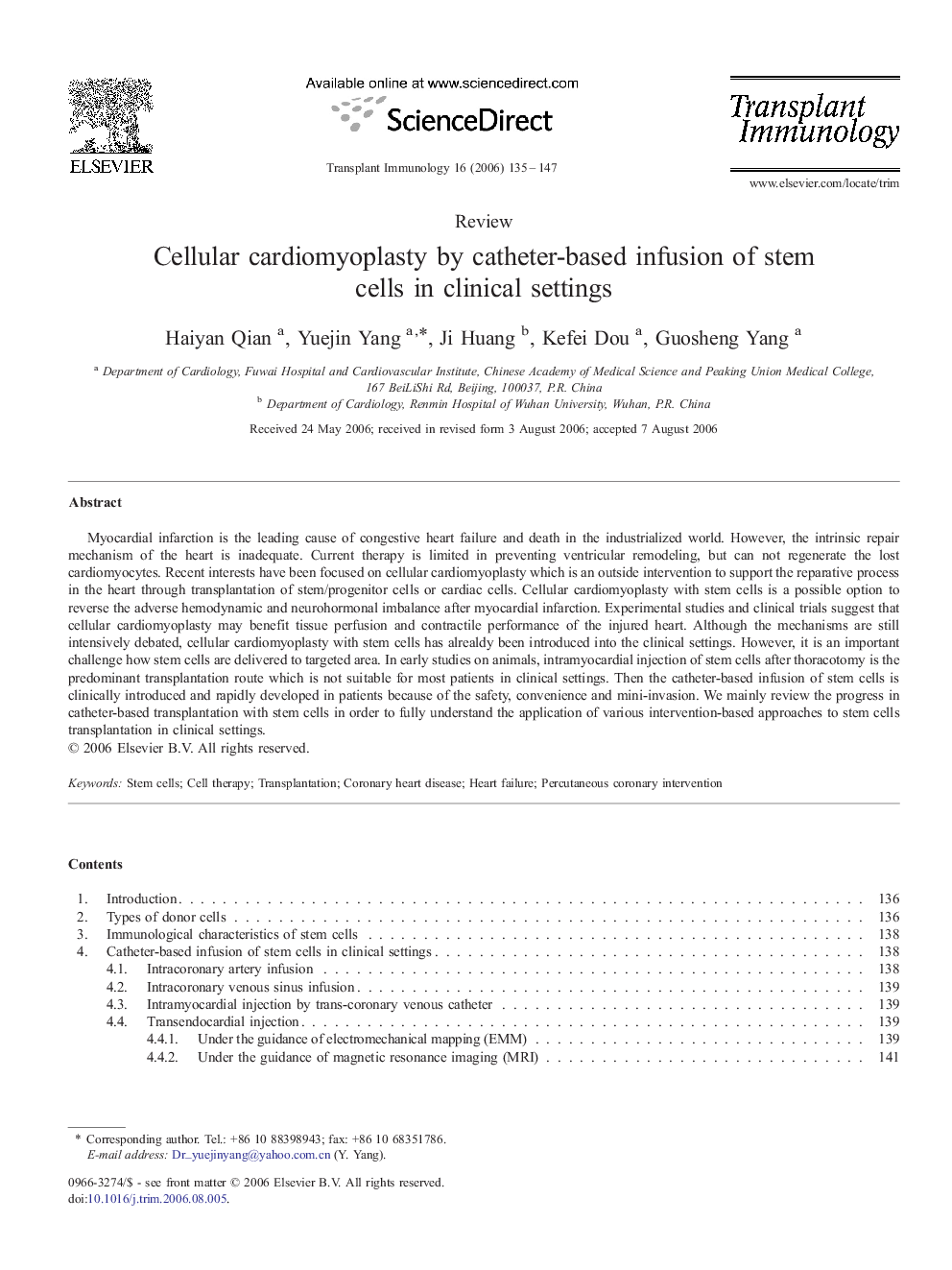| Article ID | Journal | Published Year | Pages | File Type |
|---|---|---|---|---|
| 3392588 | Transplant Immunology | 2006 | 13 Pages |
Myocardial infarction is the leading cause of congestive heart failure and death in the industrialized world. However, the intrinsic repair mechanism of the heart is inadequate. Current therapy is limited in preventing ventricular remodeling, but can not regenerate the lost cardiomyocytes. Recent interests have been focused on cellular cardiomyoplasty which is an outside intervention to support the reparative process in the heart through transplantation of stem/progenitor cells or cardiac cells. Cellular cardiomyoplasty with stem cells is a possible option to reverse the adverse hemodynamic and neurohormonal imbalance after myocardial infarction. Experimental studies and clinical trials suggest that cellular cardiomyoplasty may benefit tissue perfusion and contractile performance of the injured heart. Although the mechanisms are still intensively debated, cellular cardiomyoplasty with stem cells has alrealdy been introduced into the clinical settings. However, it is an important challenge how stem cells are delivered to targeted area. In early studies on animals, intramyocardial injection of stem cells after thoracotomy is the predominant transplantation route which is not suitable for most patients in clinical settings. Then the catheter-based infusion of stem cells is clinically introduced and rapidly developed in patients because of the safety, convenience and mini-invasion. We mainly review the progress in catheter-based transplantation with stem cells in order to fully understand the application of various intervention-based approaches to stem cells transplantation in clinical settings.
